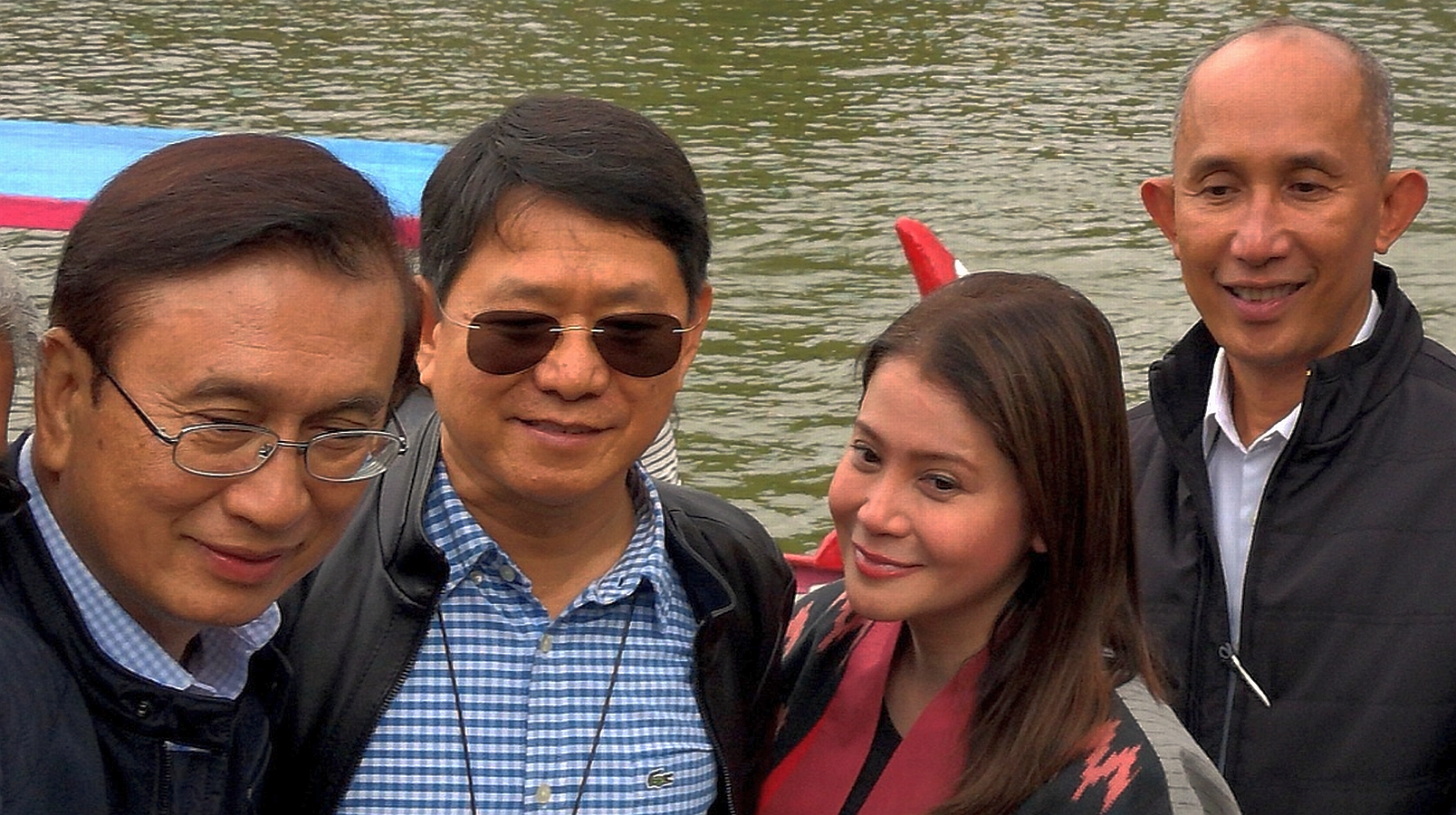Año: Focus on Benguet towns to save Baguio

TO THE RESCUE Baguio Rep. Marquez Go (at far left) and Mayor Benjamin Magalong (at far right) show Burnham Lake to Interior Secretary Eduardo Año and Tourism Secretary Bernadette Romulo-Puyat after presenting plans for Baguio’s redevelopment on Friday. —EV ESPIRITU
BAGUIO CITY—Saying Baguio needs to be “saved” from overdevelopment, Interior Secretary Eduardo Año has urged residents to make sacrifices as the city undergoes massive redevelopment.
On Friday, Año and Tourism Secretary Bernadette Romulo-Puyat were briefed about the redevelopment plans during a meeting at the presidential Mansion, where a P480-million fund from the Department of Tourism was committed for the modernization of the century-old Burnham Park and its man-made lake.
The fund is part of a national allocation for Baguio’s rehabilitation of vital public infrastructure such as its sewage system, the public market and various parks.
Included in the rehabilitation plan are the establishment of a low-carbon transport plan and multiple public utility terminals, and a cable car system that connects Baguio to La Union province.
The plan also involves reviving a 2013 proposal for an elevated train system called the Automated Guideway Transit that links Baguio and La Trinidad Valley in Benguet province.‘Help us win this fight’
Article continues after this advertisementThe city government is scheduled to start most of these rehabilitation projects this year, so “residents and tourists must help us win this fight,” Año said.
Article continues after this advertisement“I know you will be affected by all these projects,” he said, but “an improved Baguio is worth your little sacrifices.”
He added: “This city is slowly losing its vibrancy and serenity as decades of over tourism, migration and unregulated construction have led to a multitude of problems and massive destruction to the environment.”
But these issues affect not just Baguio but its neighbors as well, he said.
Redirect investments
Baguio Rep. Marquez Go, who attended the briefing, said Baguio’s modernization plans must help redirect investments toward neighboring towns of La Trinidad, Itogon, Sablan, Tuba and Tublay, all in Benguet.
The city and these towns have a social and economic collaboration called BLISTT (the acronym stands for the component towns and city), which was formed while the summer capital was being reconstructed after the Luzon earthquake in 1990.BLISTT’s original aim was to improve the local economies of Baguio’s neighbors to help decongest the city.Ripe for development
These towns are much bigger than Baguio and are therefore ripe for development, Go said. “Baguio is just too small,” he said, while towns like Itogon and La Trinidad are twice its size.
Año said BLISTT “would provide solutions to the growing population and economic, business and environmental concerns of the city.”Itogon Mayor Victorio Palangdan and La Trinidad Mayor Romeo Salda said a council of BLISTT mayors had agreed to develop projects and share resources.
The BLISTT communities have common problems with water, waste management and roads and transportation systems that were not designed for a growing population, Palangdan said.Baguio Mayor Benjamin Magalong said pollution from the city contributed to the fecal coliform found in Balili, Bued and Asin-Gallano rivers.He said the city had been negotiating for a loan with the Asian Development Bank to develop a more comprehensive sewer system that would connect more households.
It also asked national agencies to finance the installation of three more sewage treatment plants near the river systems.
Año and Puyat said the rehabilitation would not require Baguio’s closure. But they did not discuss a proposed moratorium on tree cutting and new buildings that Magalong had requested last year.